As with our koala experience in Australia, I’d like to preface this post with a little note. We know that not everyone reading this is supportive of Churchill Downs, the Kentucky Derby, or horse racing in general, and therefore this experience as well as our Derby experience next week might not be for you.
However, we felt that when you’re in Kentucky on a 50 state road trip you *must* experience the Kentucky Derby. We don’t follow horse racing; not on principle, we’ve just never gotten into it. Having now been to Churchill Downs, seen the track, gone behind the scenes and more, I’m confident in the care that I saw being given to these horses that were born to race.
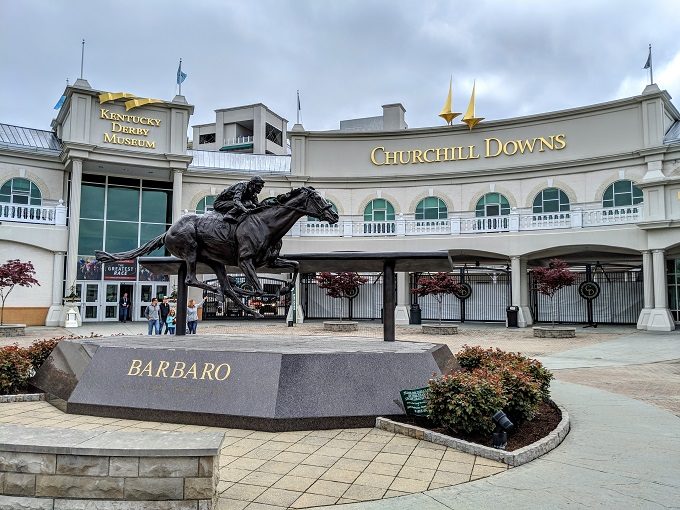
Here’s more about our experience at Churchill Downs, the Kentucky Derby Museum and the tours we took.
Fun Facts
We learned quite a few fun facts during our time at Churchill Downs.
- Horses are only allowed to race in The Kentucky Derby when they’re three years old. That’s it. You get one chance. One year. Then your time has passed.
- Colts (males) and fillies (females) can run The Kentucky Derby, but only three fillies have won in 144 years. Therefore the Kentucky Oaks is run the day before the Derby and is only open to three year old fillies.
- Horses are all given the same birthday the year they’re born. They’re all born between January and May of a given year, but on their paperwork ‘January 1’ is their birth date.
- Horses that win the Derby are usually retired because, while the purse for the race is 1.8 million, that’s divvied out to other members of the horse’s training team. The real money comes from studding the winning horse out since bloodlines are so important in horse racing.
- Secretariat is considered so amazing because he won by 31 lengths (which is the nose to tail length of 31 horses between him and second place).
- Posts are drawn by random the Tuesday before the Derby. The only post which hasn’t ever won is 17.
The Kentucky Derby Museum
When you arrive you’re greeted by the Derby Countdown Clock.
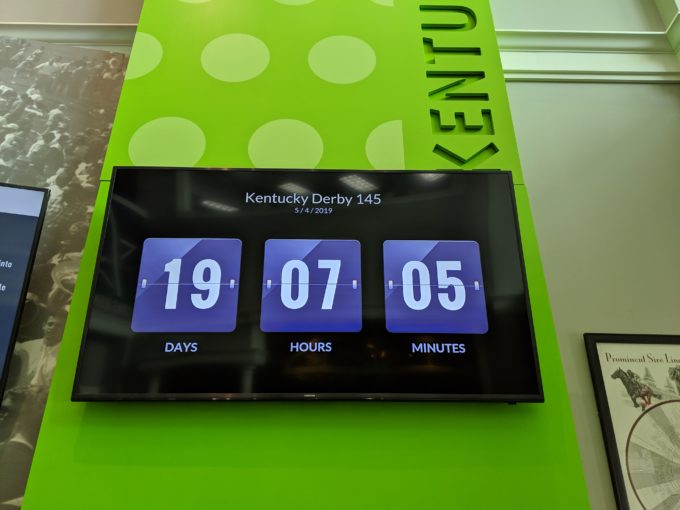
After purchasing our tickets (as well as one extra tour ticket for the following day), we made our way into The Kentucky Derby Museum. There’s so much to see and take in – you definitely need more time than we spent to really read all that’s on offer, especially if you’re a horse person. Here are some pictures to walk you through some highlights of the museum.
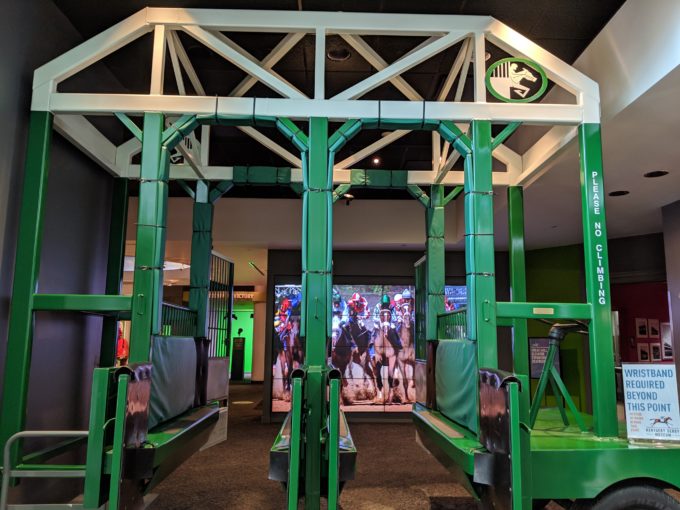
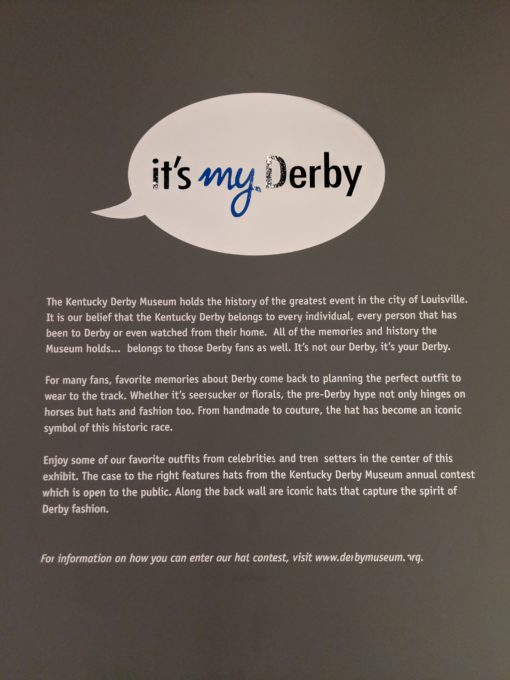
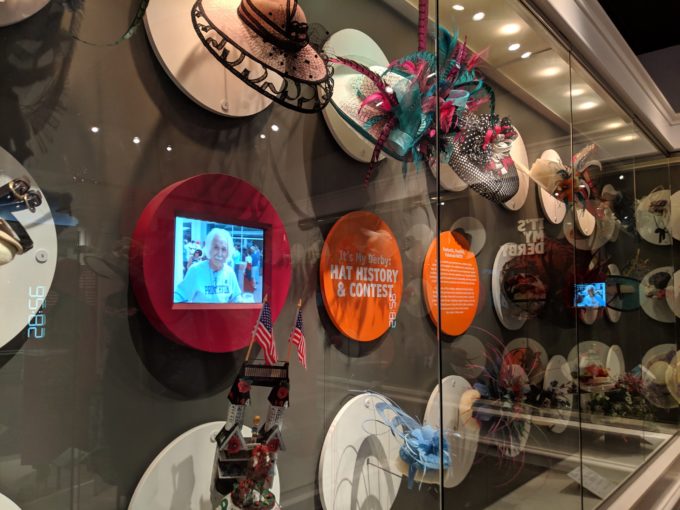
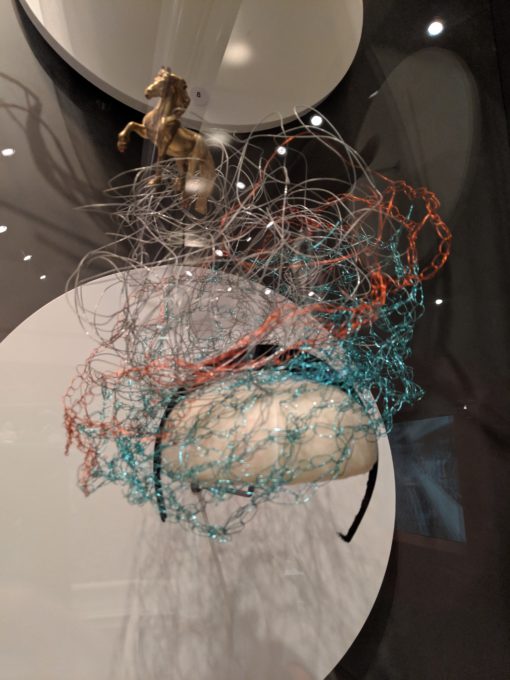
I found this next part really interesting. The Garland of Roses is incredible when you see how much work goes into it. Individual water vials, fabric-wrapped flowers that stand up when they’re on the horse, just so much to consider.

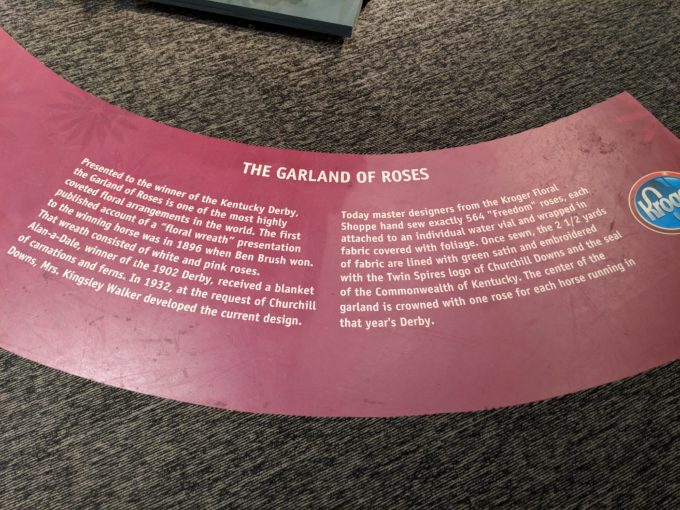
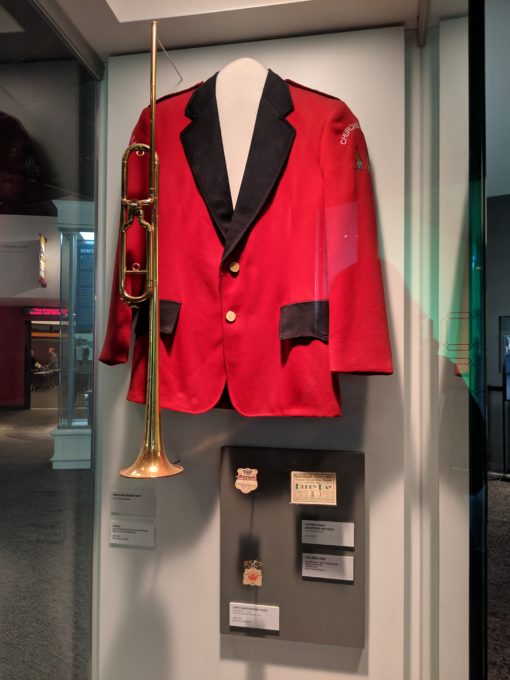
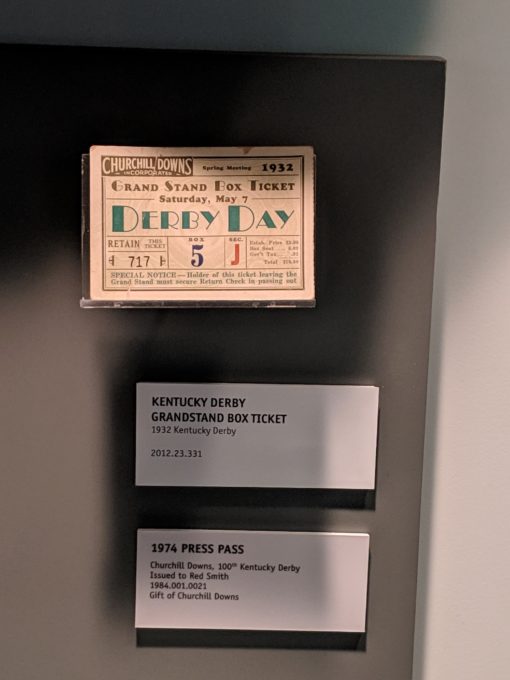
One thing that was fun was an interactive display that allows you to ‘bet’ on a horse race from the past. This allows you to see how it works and to cheer your horses on.
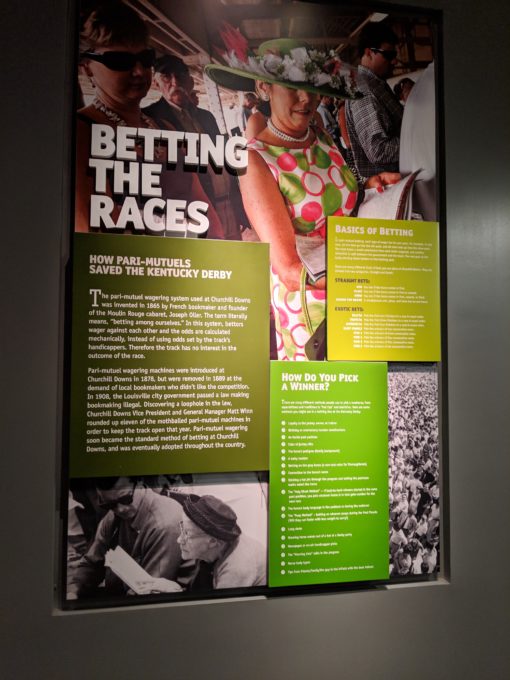

There’s an area to learn about the track types. The Kentucky Derby has been run every year for 144 years (this year being the 145th running of The Kentucky Derby). In the center of the fast and wet track shows the make up of the track at Churchill Downs.
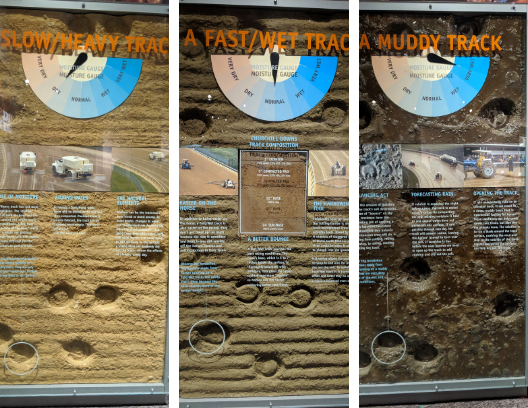
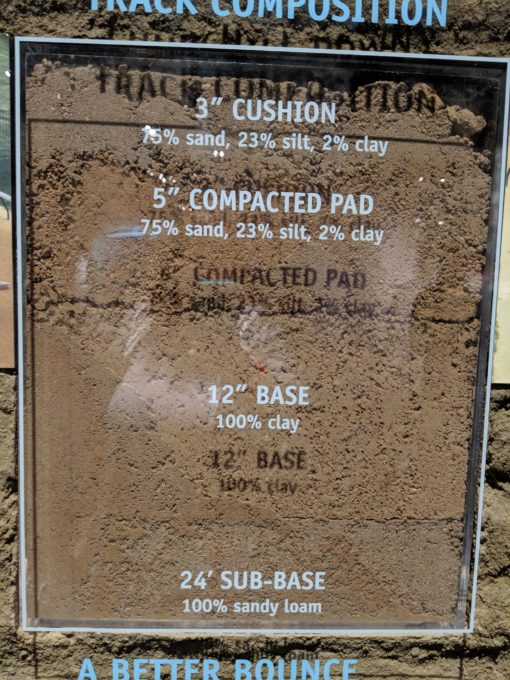
Included in your ticket is a chance to see “The Greatest Race”. It’s a 30 minute film and was really entertaining and interesting. It gave you a taste of what a day at The Derby must be like.
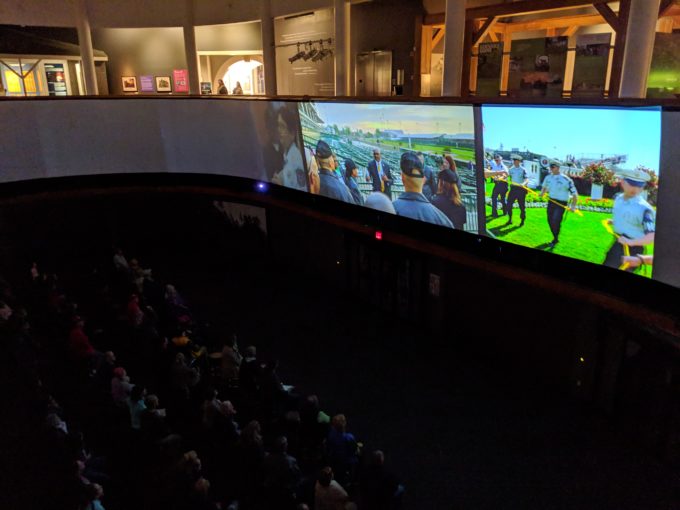
There are two floors to the museum. We went out at this time to the History Tour and came back to do the rest of the museum.
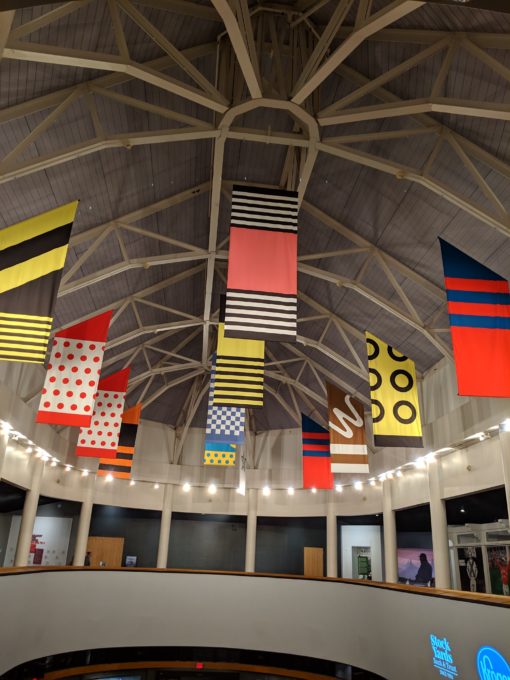
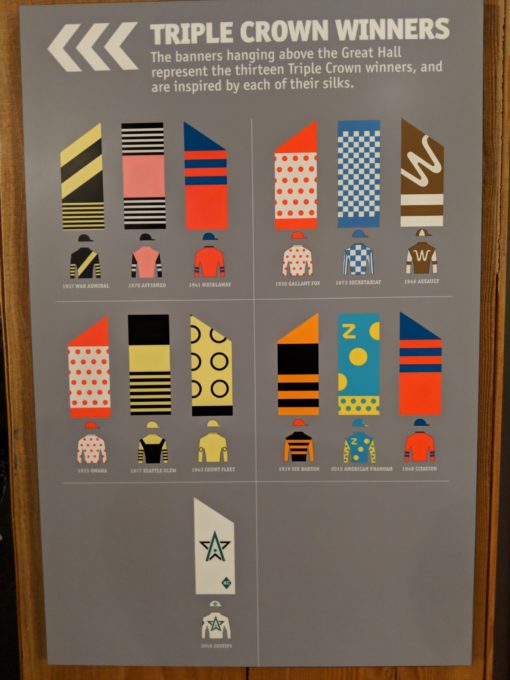
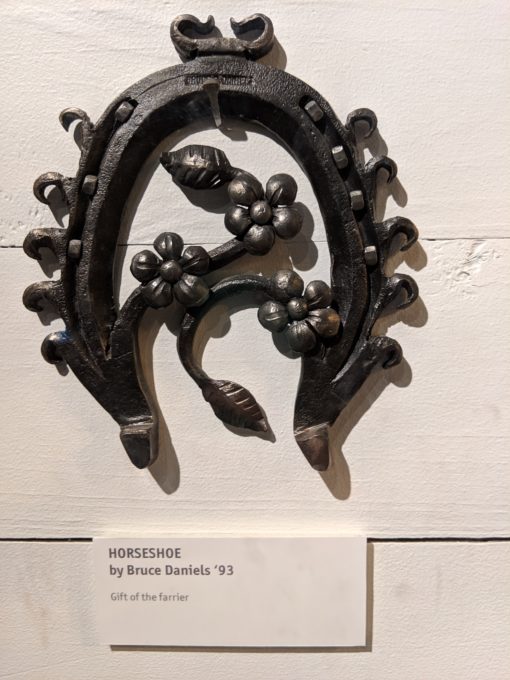
There’s a new display open that honors jockey Bill Shoemaker and trainer D. Wayne Lukas.
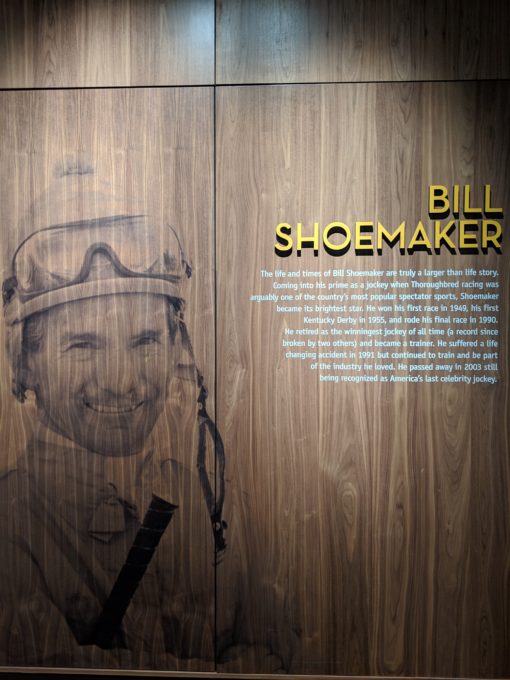
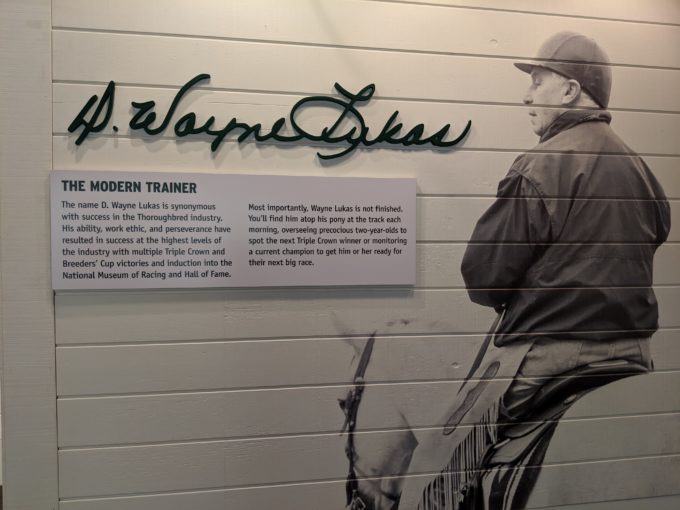
One of the parts that I found most interesting was the wall below focusing on how just one horse out of 30,000 thoroughbred foals wins The Kentucky Derby each year.
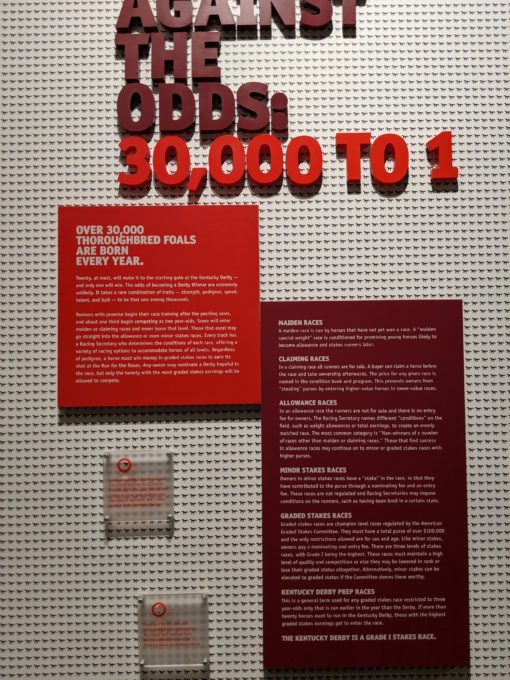
The display is covered in little horses with a focus on random ones with information about their story.
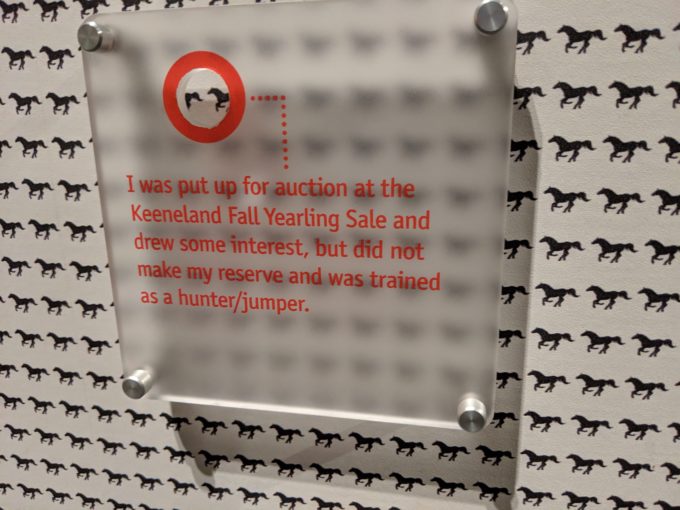


There’s a ton more information on the second floor about the breeding process, bloodlines, training and more.
History Tour Of Churchill Downs
Included in your ticket is a History Tour of Churchill Downs. This takes you out to the Winner’s Circle and down to the track. You hear a lot of interesting stories about past winners whose names are displayed around the back buildings.
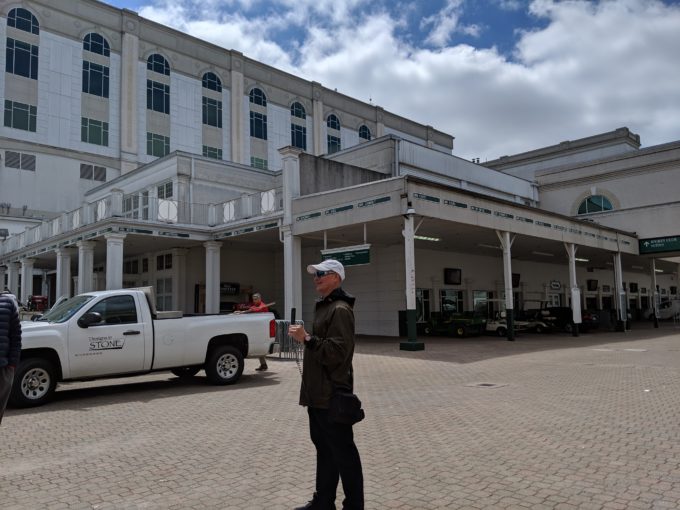

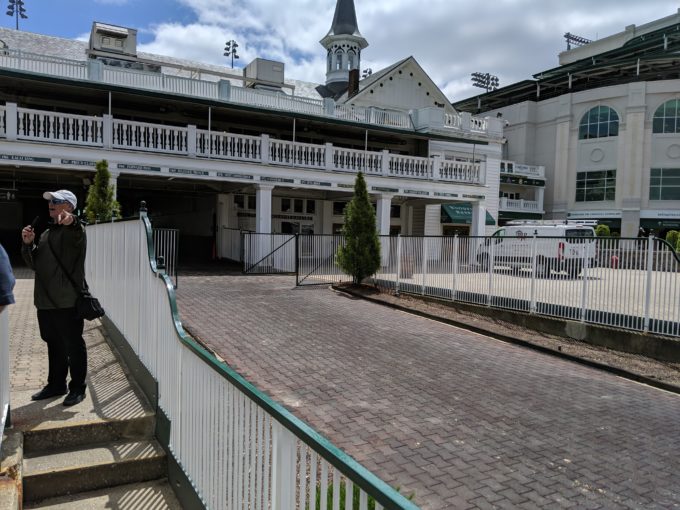
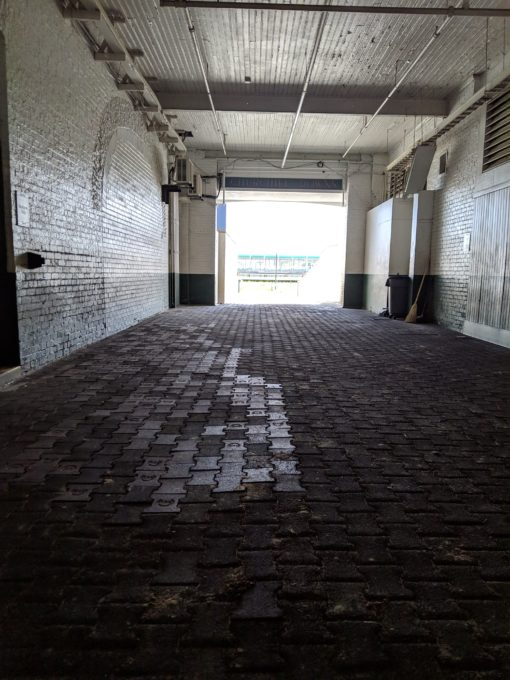
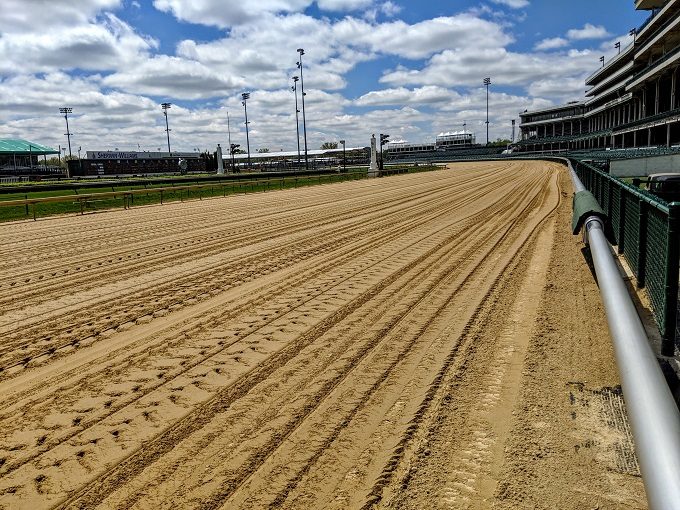
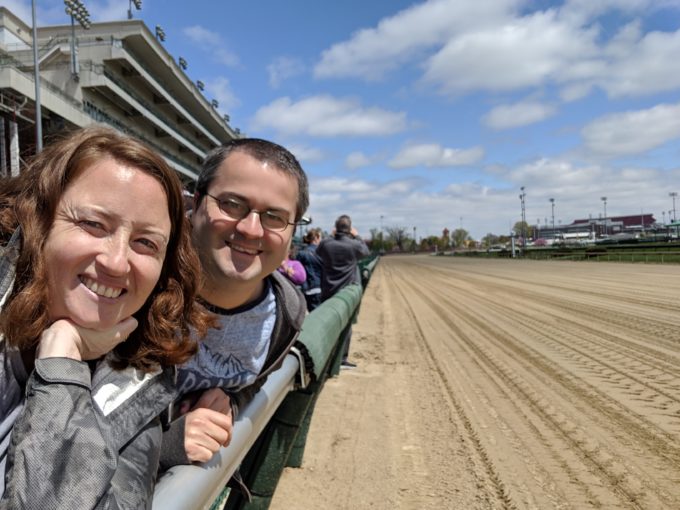
At the end of the History Tour you get to see the resident horse and pony.
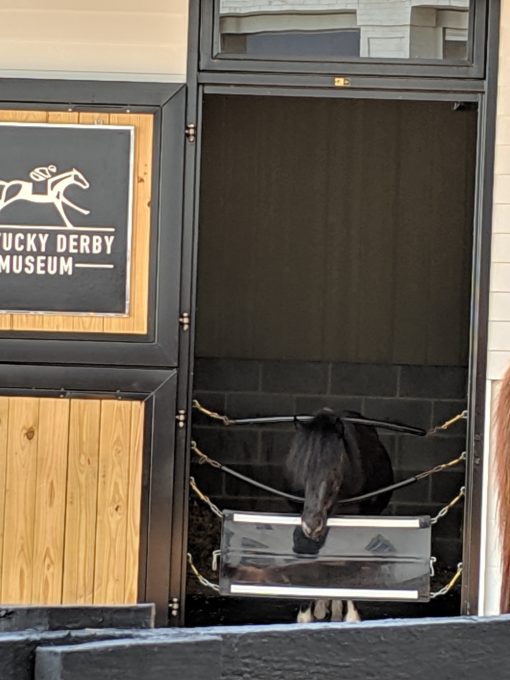
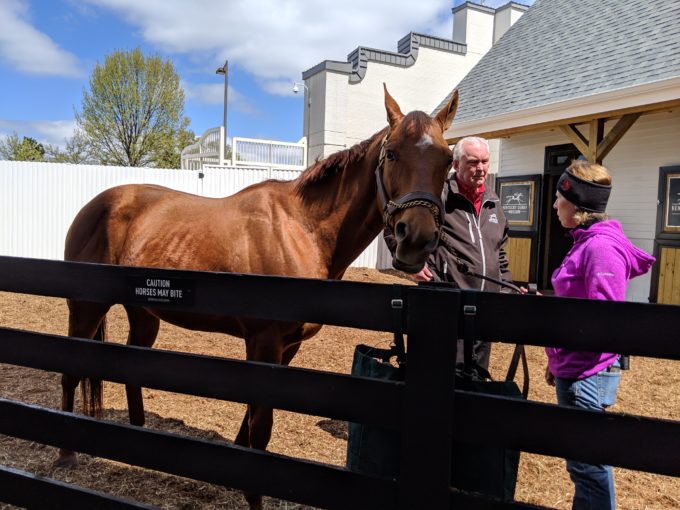
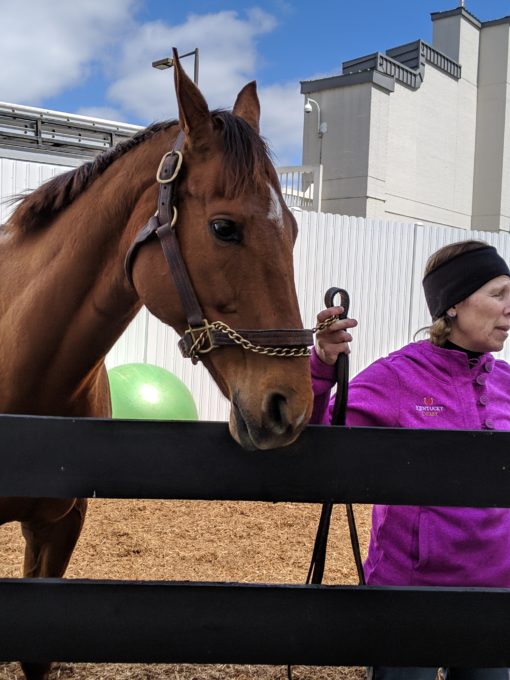
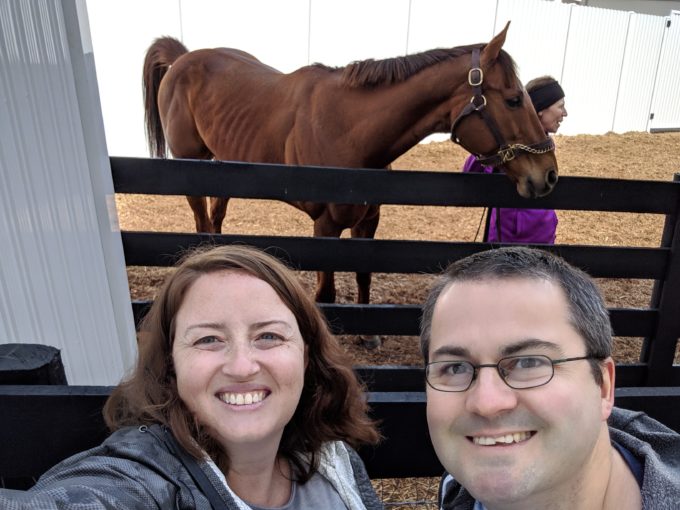
Our time at the museum was coming to a close after our tour. There was just one last thing to do…
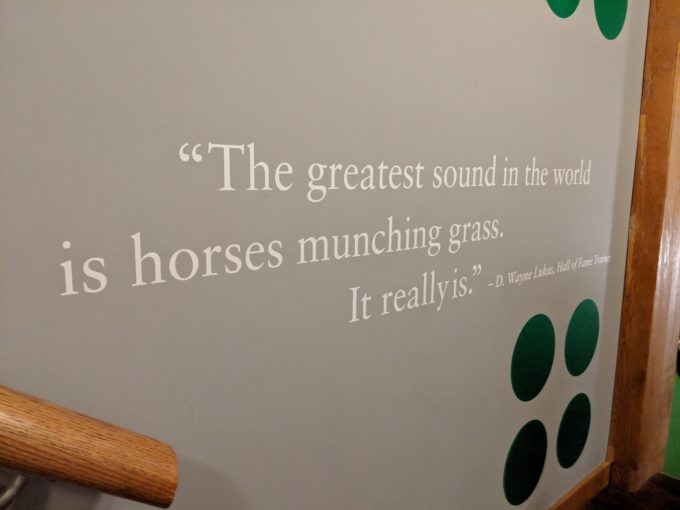
The Mint Julep & Derby Pie
It was time to try all the things!
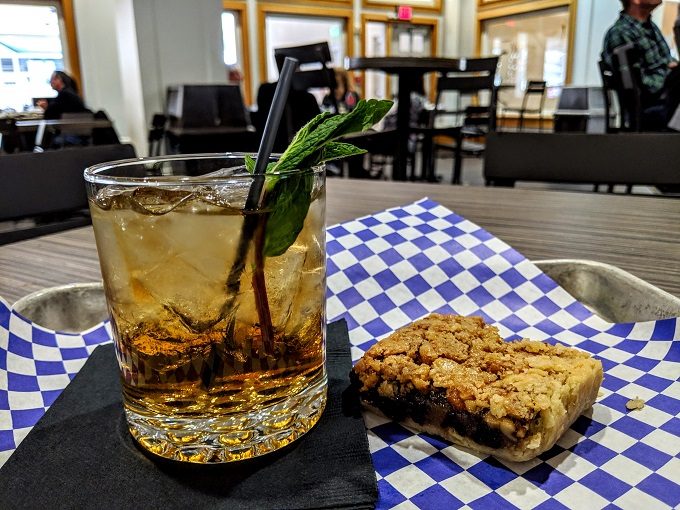

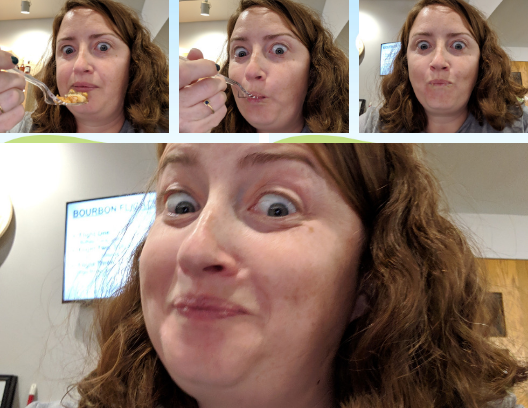
Barn & Backside Tour
Because of the time we arrived at The Kentucky Derby Museum, there wasn’t time to go on the Barn and Backside Tour that day. Stephen wasn’t too worried about going on it, so I signed up to go the next morning.

It was great! Our guide, Barry, did a great job! I also got to meet Linda and chat with her; she’s been around racing for over 3o years and is a photographer. I learned so much.
We learned from Barry that there’s an entire community of workers (around 600) who live at the Backside of Churchill Downs. They’re part of the training teams and live in barracks and above the stables. They live there for free and are provided a small salary. There’s a restaurant, church, learning center and other necessities for them on site.
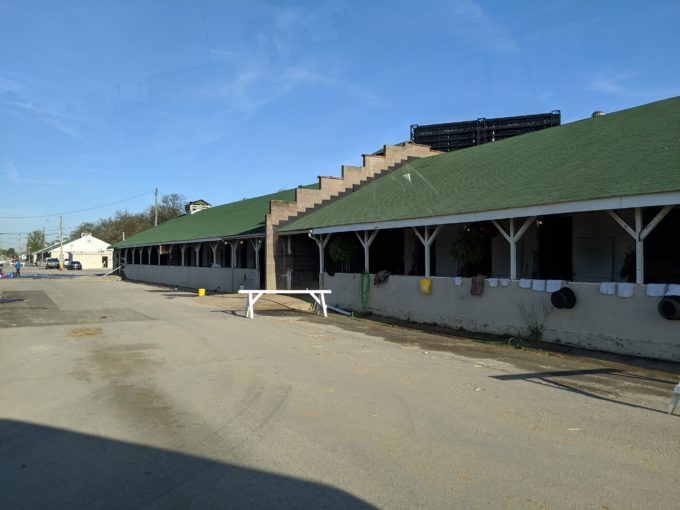
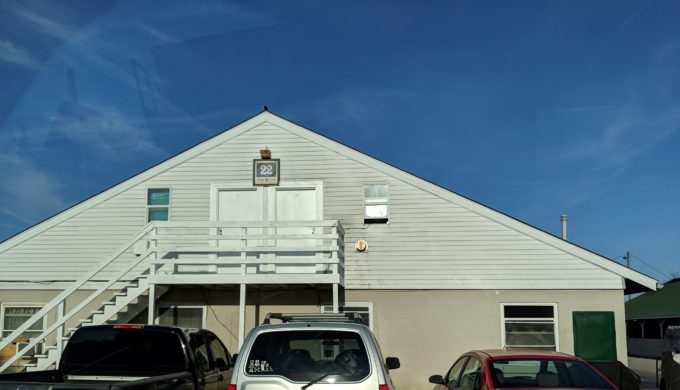
Other fun facts I learned on the Barn & Backside Tour include:
- There are 47 stalls and 1,400 horses is its full capacity. On our tour day there were around 1,000 horses already present.
- Trainers charge a daily rate and is an average of $100. Out of that comes $7.50 per day for the stall, exercise rider, hot walker, groom and feed.
- Outriders are the police and lifeguards of the track. Barry described the two out the morning we visited as traditional cowboys – they ride large horses and watch the training each day. If a horse is uncontrollable or throws the rider, they bolt into action to recapture the horse. Barry says it’s quite a sight to see. Thankfully, we didn’t see it that day, but there was one spirited colt who seemed up for the challenge!
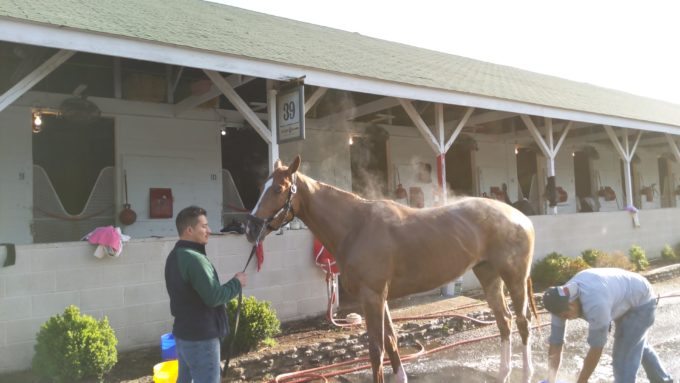
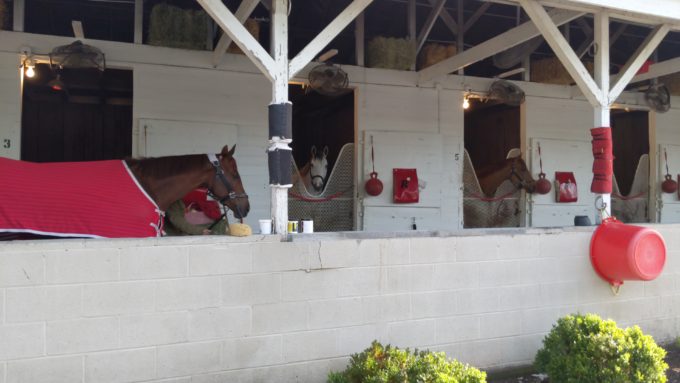

Breeding Facts
As I mentioned earlier, the real money is when your horse wins The Kentucky Derby and you retire them from racing to stud. They then “work” about 4 months a year and spend the rest of the year living the horse life of luxury.
Here are a few breeding facts I learned about past winners:
- It costs $200,000 to breed with American Pharaoh who won the Triple Crown in 2015. In the first year alone he had approximately 160 offspring.
- Justify – winner of the Triple Crown in 2018 – is currently at a rate of $175,000 to breed with.
- One horse (Storm Cat) made over $800 million for his owner, with his fee being $500,000. Normally, the fee is paid once the foal is born and stands up as a guarantee. Not with Storm Cat. There was no guarantee, it was $500,000 just for the chance to breed. He bred for 21 years.
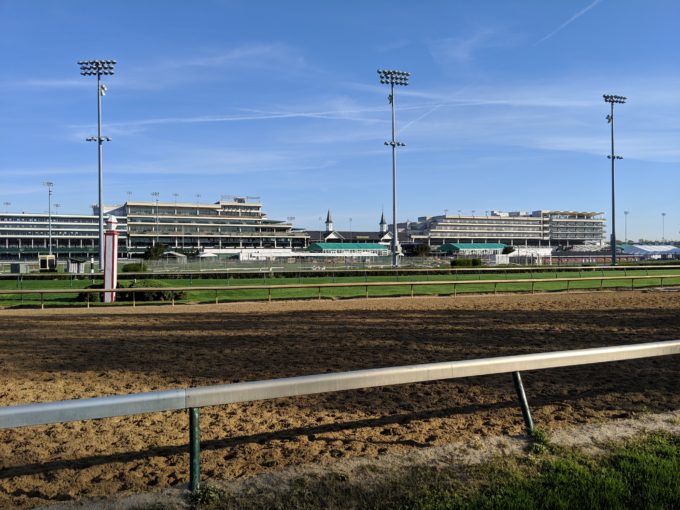
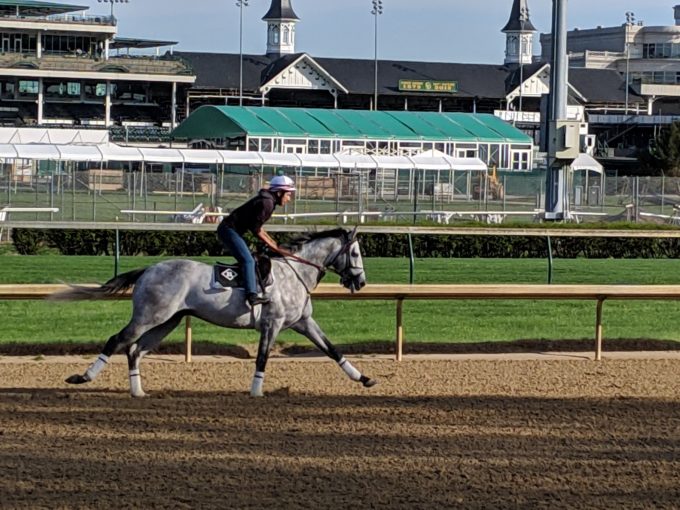
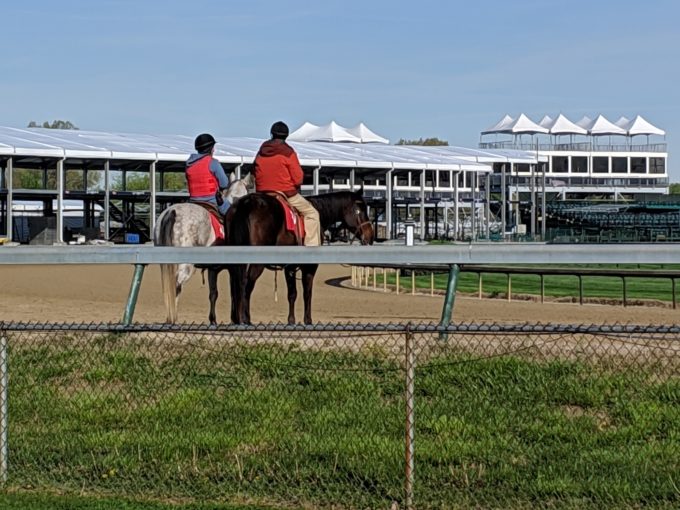
Kentucky Derby Museum Ticket Prices
Overall, The Kentucky Derby Museum, History Tour and Barn and Backside Tour were worth their price. At the time of our visit prices were:
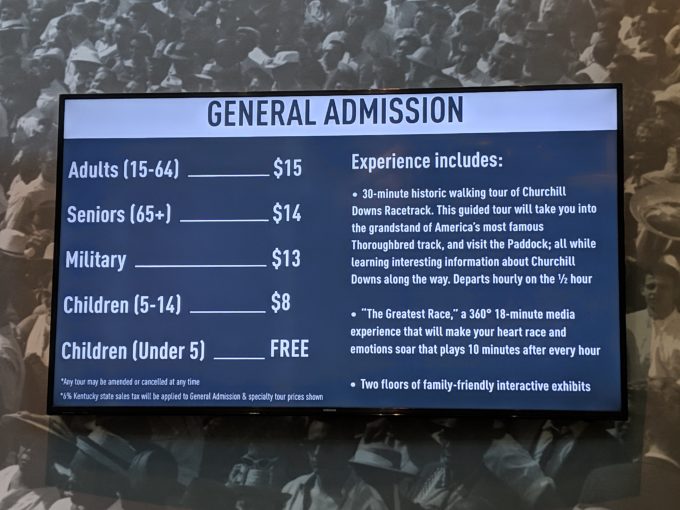
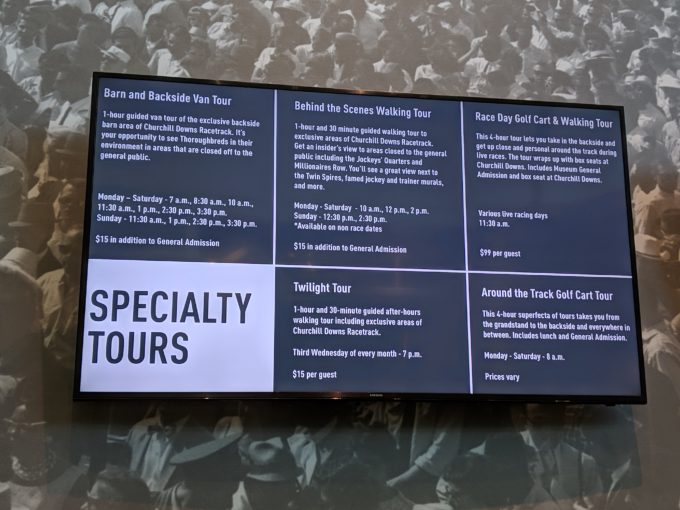
Address
Kentucky Derby Museum, 704 Central Ave, Louisville, KY 40208
Leave a Reply